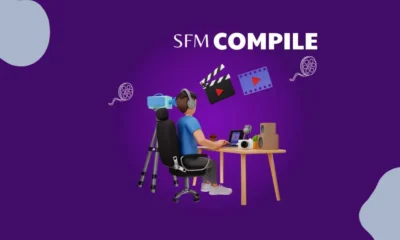GENERAL
Same-Day Delivery and E-Commerce Growth

Same-day delivery and e-commerce businesses have grown together over the last few years, particularly after the increase in online shopping after the COVID-19 pandemic.
The growth of both industries is great – what would be ever better is if they continue to work together and work to enhance the other.
Fast same-day delivery services ensure that e-commerce items, like gifts, parcels, and packages, are delivered by the cut off time of a day.
This is the type of world that we live in today, and e-commerce companies need to ensure that their customers do not have to use next day delivery.
The Evolution of Customer Expectations
As cited in the report by Australia Post Inside Australian Online Shopping, speed is one of the most powerful motivators within the purchase funnel of consumers.
Research has shown that more than 60% of customers tend to abandon their shopping baskets due to prolonged delivery times.
For businesses, the message is straightforward: the digital retail space has created tremendous competition and same-day delivery has almost become standard service.
Outmaneuvering others requires implementing the newest strategies first.
How E-Commerce Growth is Driven by Same-Day Delivery
The majority of people assume that same-day delivery is only helpful for convenience reasons. While that may be partially correct, it is equally a major strategic avenue through which businesses can grow.
In general, we can see that the two both grow together as they respond to the globally connected and internet-run world. Each, therefore, should find ways to benefit and enhance the other.
Improved Customer Retention
Customers indicated they would be more willing to finish the purchase transaction if they were to receive their orders in a few hours, even on public holidays.
Impulse purchases (one of the most important buyer types) have shown greater demand for retailers with quick delivery alternatives.
In addition, same-day delivery enhances trust and loyalty. If customers know that the products they are ordering will arrive in the least possible time, they are likely to spend more.
Growth with Competition from International Businesses
Australian firms can utilise same-day delivery to effectively compete, even as Amazon and other retailers dominate the e-commerce space.
Unlike global participants with offshore warehouses, local players have direct access to customers. Therefore, they can get orders to customers much faster.
Lower Chances of Abandoning Shopping Carts
Whether it’s in-store or online, there will always be a queue, sometimes caused by long waiting periods; e-commerce users face the same issues and overwhelm provides another common reason for abandoning the cart.
Allowing a same-day delivery option can motivate reluctant buyers to complete their orders, reducing cart abandonment.
Promotes Local Spending
With the convenience of same-day delivery, Australians no longer have to wait weeks for shipments to clear foreign borders.
Now, consumers are more inclined to spend on local businesses that provide them with both speed and quality.
Challenges of Providing Same-Day Delivery Services
While the advantages are apparent, the same-day delivery option poses operational issues at the same time, especially for small and medium-sized enterprises (SMEs).
Understanding the specific challenges that these courier services face might be depressing, but they can help you to make more informed decisions.
Infrastructure And Logistics
Implementing same-day delivery requires sophisticated logistical frameworks.
Businesses need up-to-date systems for inventory control, order tracking, and dependable last-mile delivery services.
Local vendors can address some of these issues with their on-demand courier services provided by companies like Zoom2u and Sherpa.
Increased Operational Costs
For smaller retailers, same-day delivery can drive operational expenses through the roof.
Accelerated order fulfilment demands extra manpower, expedited processing, and express courier services which can be very costly.
Striking a balance in service delivery without compromising affordability becomes a necessity.
Geographical Restrictions
Solely focusing on metropolitan areas provides a greater potential for demand and existing logistical networks, making it easier to offer high same-day delivery convenience.
Unfortunately, those who service clients in rural or remote locations find this option the most challenging.
Conclusion
Change in Australia’s e-commerce landscape is already in sight with same-day delivery options available.
Though there is strategy and investment planning involved in making the change, businesses that do embrace it can expect an increase in sales, customer satisfaction, and sustained growth over time.
Retailers in Australia need to get going right away because the competition in the online market is heating up.
Be it through collaboration with express courier services or through more advanced logistic technologies, adding same-day service will make maintaining industry competition much easier.
-

 BIOGRAPHY7 months ago
BIOGRAPHY7 months agoBehind the Scenes with Sandra Orlow: An Exclusive Interview
-

 HOME1 year ago
HOME1 year agoDiscovering Insights: A Deep Dive into the //vital-mag.net blog
-

 HOME1 year ago
HOME1 year agoSifangds in Action: Real-Life Applications and Success Stories
-

 BIOGRAPHY1 year ago
BIOGRAPHY1 year agoThe Woman Behind the Comedian: Meet Andrew Santino Wife




























